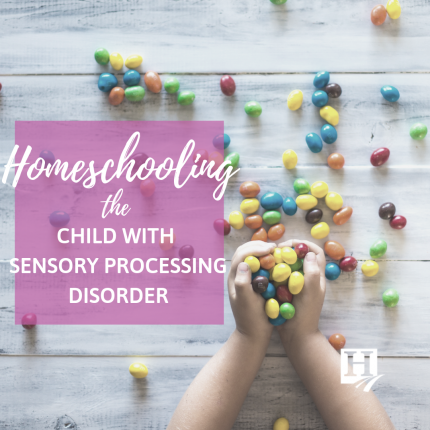This post contributed by Kerry Jones.
The term “visual-spatial learners” is perhaps not a household phrase, but in the educational community, it is becoming more and more familiar. Thanks to Dr. Linda Silverman’s original research, and her website, articles, and books on the subject of visual-spatial learners, there is a wealth of information about the segment of the population with this learning style.
In schools, children with visual-spatial strengths are often accused of being “lazy” and “not living up to their potential.” That is because these students excel at specific school subjects, even showing aptitude way beyond what is average, but then struggling in other areas of the curriculum. This uneven performance can be a trademark of a visual-spatial learner, especially if the subjects they shine in are ones that require strong visual skills, and the subjects they flounder in depend on sequential reasoning or computation.
As a homeschool mom of a child on the autism spectrum, I have recently discovered that many children with Aspergers and autism have visual-spatial learning strengths. Are you wondering if you may be homeschooling a visual-spatial learner? There are telltale signs to look for. You might have noticed several unique abilities your child has, such as:
- strength in map-reading
- using intuition to solve problems
- having strong artistic, mechanic, or technological talents
- enjoys building toys such as Legos or K’nex
- having a vivid imagination
- can often find their way back to places they have only visited once
- loves playing on the computer
- good at puzzles and mazes
These are often earmarks of a visual-spatial learner. If your child has several of these, then you are very likely the parent of one of these special kids. Congratulations!
I say “congratulations” because now at least you are on your way to better understanding how your child learns, and you can adapt your homeschool methods and materials to help ensure their academic success. Visual-spatial learners are sponges of information if the information is presented to them in a way they can easily process.
In general, this involves giving a lot of thought about how to present information visually. Curricula that do not use illustrations, pictures, and charts in abundance will be worthless for your VS child. Visual-spatial kids also need to learn to keyboard earlier than other children because they often have immense struggles with handwriting. They will get frustrated with their inability to communicate in writing if they are not able to type as quickly as their brains are thinking. There are some terrific online and offline tools for teaching typing to the younger set.
The program that I am personally the most impressed with is Read, Write, and Type, by Talking Fingers. This is a highly visual and interactive program that introduces keyboarding at the same time as letter and phonics instruction. Also, because mechanics isn’t a strong suit for these learners, it is a good idea to focus more on content than details. Any curricula that overemphasize the importance of spelling, capitalization, and grammar, and underemphasizes the learning process will be disastrous for a visual-spatial learner.
There are many wonderful tools to make learning more visually effective for your VS homeschooler. Bulletin boards, educational videos, hands-on manipulatives, graphic novels, posters, and of course the computer, are absolute necessities when teaching to this learning style. Math is a subject that especially needs visual cues. Math is traditionally taught through auditory methods such as reciting the facts aloud. Visual-spatial learners simply cannot retain the facts this way.
Instead, they may memorize their multiplication facts by assigning visual stories or cues to each fact. Programs such as Times Tales and Time4MathFacts are designed for just this purpose. Another indispensable tool for visual-spatial learners is a sketch pad. Instead of taking notes, VS learners can learn to take “scribbles.” In a lecture, a movie, or while reading a book, these learners can keep track of the key ideas of the subject by doodling about it. In fact, creating infographics or graphic organizers is a perfect way to help VS learners make connections.
There are many types of assistive technology to aid visual-spatial learners. Every homeschool of a VS child should invest in a good spell checking device for off-computer work (phonetic spell checkers are especially helpful), graphic organizer software that allows students to map out their writing visually, and story creation software to allow them to express their creativity in more ways than just text on a page.
If you are homeschooling a visual-spatial learner, take time before purchasing curriculum to understand as much as you can about their learning style. Research all aspects of visual learning – – both its strengths and weaknesses. This will allow you to customize a homeschool program that is uniquely suited to your child and has the best chance of creating a successful homeschool experience for you both.
Kerry Jones is a guest author at LetsHomeschoolHighschool.com and a contributor to one of the web’s largest community for secular homeschoolers, SecularHomeschool.com. She is a “homeschooling alumnus”, having graduated both sons who were each homeschooled from kindergarten.
Latest Posts

As homeschooling continues to grow in popularity, more parents are taking on the challenge of providing a comprehensive education that not only meets academic standards but also prepares their…
Read more >
June has come and gone, and summer is in full swing! Whether you're traveling this summer or staying close to home, we hope you're enjoying this time with your family. We wanted this month's…
Read more >
Summer is an all-around favorite season for most people. In the U.S., it’s even more exciting for many of us since we get to celebrate Independence Day! The Fourth of July is a wonderful…
Read more >



